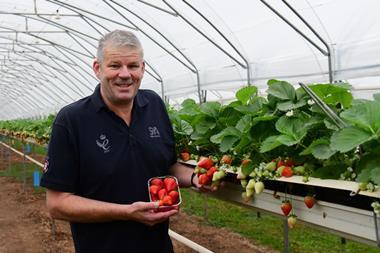Supplies of tea from Kenya, Sri Lanka and India have fluctuated – but prices have been kept down by a fortunate balancing act. Robert Miles reports
The quintessential British hot drink the cup of tea has been a bastion of stability amid the global commodities chaos recently.
While the price of Arabica coffee has shot up by 68% over the past two years and cocoa powder has soared an eye-watering 76%, Kenyan tea one of the most commonly used teas in UK blends has risen just 6%, to £2,262/tonne, while tea from Sri Lanka has actually fallen by 16%, to £2,246/tonne.
Global tea markets have managed to balance supply shortages and soaring demand, avoiding the perfect storm that has sent other commodities spiralling upwards.
For example, last year, drops in production in India and Sri Lanka caused by a late monsoon were countered by record tonnage in Kenya, while earlier this year, reduced Kenyan yields caused by drought were compensated for by good Sri Lankan crops. Without this fortunate balance, the price of the Great British cuppa would have been sent unquestionably higher.
But global supply is likely to be even more precariously balanced in 2012. As a result of the continuing drought on the Horn of Africa, production in Kenya is already expected to be down by about 7.2% (30 million kg) next season, and there are concerns losses could amount to as much as 133 million kg if there is a persistent lack of rain.
Although production forecasts for other key producing regions are looking good China’s output is tipped to be up 6% to 1,452 million kg, with India up 1% to 989 million kg and Sri Lanka up 2% to 331.4 million kg these increases would struggle to make up for a devastated Kenyan harvest.
Production costs, such as the price of land, fertiliser and labour, in key producing countries are also on the rise and other crops are increasingly competing for land. To compound matters, demand for tea is showing no sign of slowing down. Despite turmoil in the Middle East a key tea-consuming region global demand for tea is set to rise across the board next season, with additional demand coming from China and India’s rapidly growing middle classes.
As we move towards the year’s end, world tea prices are expected to rise seasonally, but across 2011 prices look set to be relatively flat on 2010. Whether they will remain stable in 2012 will depend on the severity of the Kenyan drought. Here’s hoping tea markets will be able to balance supply squeezes once more, and the British brew stays affordable.
Sign in to comment on this article
Not logged in before? Register for FREE guest access today.
You will be able to:
- Read more stories
- Receive daily newsletters
- Comment on stories
Advert



















No comments yet